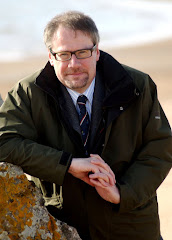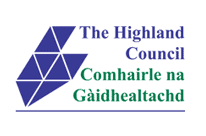FIFTY FACTS ABOUT SUTHERLAND.
1. The name “Sutherland” comes from the Norse “southern lands”. That’s because, although it’s in the north of our country, it was in the south to the Vikings!
2. Sutherland has a largely Gaelic-speaking heritage (unlike neighbouring Caithness whose heritage is largely Norse.) The difference can often be seen in place-names.
3. Sutherland is mentioned in the book “Lord of the Rings”, as “Haradwaith”
4. Sutherland has Britain's highest waterfall (with a sheer drop of 658 ft) - Eas a' Chual Aluinn in Assynt. It is three times higher than Niagara Falls.
5. Sutherland is the only county to have three coasts: East, North and West.
6. Sutherland has Britain’s lowest population density – just two people per square kilometre (around one person per square kilometre in the West.)
7. Sutherland has Scotland’s lowest proportion of population of school age.
8. Sutherland’s former county town is Dornoch, on its Moray Firth coast.
9. Dornoch Cathedral was founded in 1224 by Gilbert de Moravia – the last Scotsman to be given a place in the Calendar of Saints! Dornoch’s history is explained at the local Historylinks visitor attraction.
10. Dunrobin Castle, near Golspie, is the seat of the Dukes of Sutherland and their predecessors since around 1228. It has been progressively enlarged and modified since, the most recent major change occurring in the mid 19th century when it was adapted to a “Loire Chateau” style. It has fine Lorimer interiors, and is open to visitors.
11. Scots-American tycoon and philanthropist Andrew Carnegie built Skibo Castle, near Dornoch.
12. Madonna and Guy Ritchie married at Skibo. Obviously the romantic Highland air had a beneficial effect – the marriage lasted more than twice as long as Madonna’s first!
13. The whole Dornoch Firth Area is designated a National Scenic Area, thanks to the fantastic views of coast and landscape afforded from its shores and along its length. Even before you enter Sutherland, you can get a wonderful view of the Firth from Struie Hill, on the A836 near Ardgay.
14. Sutherland has a range of wonderful biking trails, notably those at Balblair near Bonar Bridge and an extensive new network on the hillside above Golspie. There’s no charge for these, and the Golspie trails also offer bike and kit hire.
15. Loch Fleet, near Golspie, is a National Nature Reserve. It’s a fantastic site for viewing wild birds, both native and migratory. The range of plant life around the loch is also exceptional, including the very rare “one-flowered wintergreen”. Loch Fleet is also an excellent location to view seals as they bask on the sandbanks at low tide – often dozens of them!
16. At Loch Fleet’s north-west boundary is the Mound Causeway, built by Thomas Telford in 1816 to provide a sure foundation for a road crossing over the estuary, and so speed communications to the south from Sutherland and Caithness.
17. Sutherland had Britain’s most northerly coal mine, at Brora, whose workings extended out under the North Sea. It has now closed, but Brora Heritage Centre, just outside the village on the banks of the river Brora, tells the story.
18. Sutherland had a gold rush of 600 people when, in 1868, local man Robert Gilchrist discovered gold in the remote Strath of Kildonan, near Helmsdale on Sutherland’s east coast. Visit Helmsdale’s “Timespan” visitor attraction to learn more.
19. Sutherland has the place where the last wolf in Scotland was killed – Loth.
20. The last witch in Scotland to be burned at the stake – Janet Horn – was put to death in Dornoch in 1727. Elderly and clearly unsound of mind, she warmed her hands at the “bonny blaze” before being destroyed by it.
21. Sutherland’s population suffered badly during the “Highland Clearances” when people were cleared from the land to make way for sheep. There is a recently-erected clearances memorial at Helmsdale.
22. More controversially, the hilltop statue towering over Golspie from the summit of Ben Bhraggie dates from the early 19th century, and is of the first Duke of Sutherland, one of the most enthusiastic participants in the Clearances.
23. At Croick, west of Bonar Bridge in Strathcarron, is a small church and churchyard where villagers, in the clothes they stood in, were refused entry to the church by the minister. Their etched pleas are still visible on the church windows.
24. The river Shin is one of Scotland’s best salmon rivers. Seeing the salmon running (swimming upstream to spawning grounds and leaping up waterfalls to get there) is a spectacular sight, and can be seen at the Falls of Shin Visitor Centre. The Centre sells Harrods goods.
25. Loch Shin, 24 miles long and about a mile wide for most of its length, is the largest freshwater loch in the county.
26. Loch Shin’s water level rose by some 12M when the dam and hydro-electric power plant were installed in the 1950s. The rushing water is used twice – a second set of turbines being at Inveran, 10km south of Lairg. Cheap electricity – twice over!
27. Lairg, at the southern end of Loch Shin, has the most extensive postcode area in the UK, stretching sixty miles or more to Cape Wrath, on the north coast.
28. Lairg hosts an annual one-day sheep auction, since 1990 the largest such event in Europe. By the end of the sale probably one sheep looks much like another!
29. Lairg boasts the recently-refurbished Ferrycroft Visitor Centre, less than five miles from the Falls of Shin Visitor Centre, which gives a fascinating insight into local history and wildlife.
30. Sutherland has some of the World’s oldest rocks, Lewisian gneiss – at 2.5 billion years over half the age of the earth.
31. Sutherland hosts the North West Highlands Geopark – Scotland’s first Geopark. “Geopark” is an UNESCO designation. The Geopark uses the outstanding and historic geology of north-west Sutherland to promote tourism, community activity and sustainable local business.
32. Bones of prehistoric animals (sabre toothed tigers etc) have recently been found at the Bone Caves near Inchnadamph.
33. The towering sea cliffs of Handa Island, a bird sanctuary, are home to around 200,000 seabirds, including many species in internationally-important numbers.
34. John Lennon spent childhood holidays in Durness, on Sutherland’s north coast.
35. Sutherland’s Smoo cave runs inland for about 600 meters and is the largest and most dramatic coastline cave in Britain.
36. Balnakeil is the mainland’s most northerly craft village – with a range of distinctive and high-quality local products, edible and otherwise!
37. Sutherland is home to one of the top 15 golf courses in the world – Royal Dornoch’s championship course. Sutherland - with a surprising number of courses including the mainland’s most north-westerly at Durness – is a golfer’s paradise.
38. In the 1930s, sailors of Britain’s biggest warship, HMS Hood, spelled out her name on a hillside above Loch Eriboll, in white-painted stones. The name is still there, regularly repainted by local people and visiting sailors.
39. Sutherland has had what is perhaps the largest meteorite strike ever to hit the UK (in Assynt). But don’t worry – it was over a billion years ago!
40. Sutherland has Scotland’s longest cave system (at Inchnadamph).
41. Sutherland has just one whisky distillery – Clynelish at Brora. It has existed officially since 1819 but may have been around in an “unofficial capacity” since around 1750! Its superb distillations can be sampled as part of its distillery tours.
42. Sutherland has an unique place in the history of geology – the discovery of thrust faults (at Inchnadamph & Knockan) led to the discovery of tectonic plate movement.
43. Sutherland has the highest cliffs on mainland Great Britain (at Clo Mor near Durness) They rise to around 920 feet (nearly 300 metres) with a sheer drop to the sea.
44. Crofters in Assynt, Sutherland, were the first to buy their land under new “community right to buy” legislation.
45. Sutherland had more former Royal Navy “Loch” class warships than any other county (3 named for Assynt lochs).
46. The name of the ominous-sounding Cape Wrath, at the extreme north-west of Sutherland (and Great Britain) actually comes from a Norse word meaning turning point.
47. Sandwood Bay, in Sutherland’s north-west, is famously spectacular, accessible only on foot, and is the home of many legends of mermaids & ghosts.
48. Altnacealgach, in central Sutherland means "burn of the cheat" – so-called because a story runs of a Ross-shire man, with home soil in his boots, taking an oath that he was standing on Ross-shire ground!
49. Altnaharra, in north central Sutherland, consistently records Britain’s coldest midwinter temperatures – minus 22 degrees in a recent winter (but of course it’s lovely most of the time!)
50. Sutherland has the only black & white phone box on Britain – at Achfary. It is decked out in this “house livery” of the Duke of Westminster’s estate.
AND ONE MORE FOR LUCK, AND TO MAKE A PARTICULARLY IMPORTANT POINT!
51. Sutherland is a nature-lover’s paradise, as you may already have gathered. If you still don’t believe that, here are some more “mini-facts” to convince you! Sutherland’s “Flow Country” is the largest expanse of peatland in Europe (second only in the world to Kamchatka, in remote Eastern Russia) Sutherland has the largest area of limestone in Scotland. Sutherland holds 50,000 pairs of puffins at Clo Mor cliffs . Sutherland has 30% of the British population of Black-throated divers. Sutherland has over half the breeding population of the common scoter. Sutherland is the stronghold for breeding greenshank (roughly 40% of UK population) Sutherland has the largest population of breeding corncrakes on mainland Britain, at Durness. Sutherland has some of the few surviving remnants of the arctic flora that developed following retreat of the last ice age. Sutherland has the most northerly oak woodland in Great Britain.



